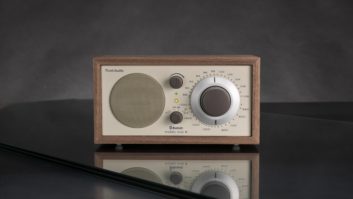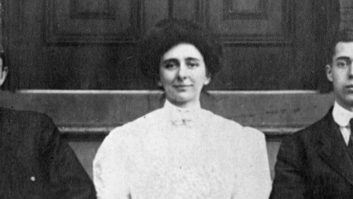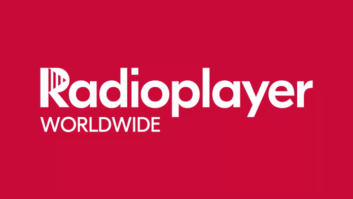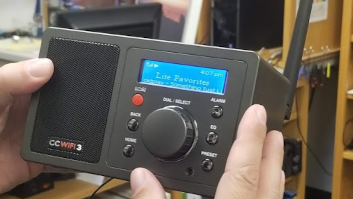A recent RW editorial cited the recent population explosion of radio channels in our industry (March 29). No longer is a radio station only one on-channel AM or FM signal. With the advent of Web streaming and HD, radio facilities all over the country have created new channels and are now facing the challenge of supporting them with additional and alternate content to reach new audiences.
If you work for a multi-station cluster, this probably means that every station in your family has multiplied in number by 3 or 4, or even 5. A six-station cluster could soon be home to almost 30 “signals,” if it isn’t already.
RISKS AND REWARDS OF NEW GROWTH
Most owners and managers did not anticipate their stations would be burdened by such demands as recently as a year ago. Launching anything new on a different delivery platform that is used by a tiny or virtually non-existent listening audience is fraught with risk and red ink. In the beginning they almost always generate pure expense with little or no income to pay for their development and upkeep. Few make any real profit.
The large conglomerates like Clear Channel and CBS can afford to throw millions of dollars into Web streaming and HD initiatives. They’ve fully accepted the challenge of taking on the new breed of content delivery competitors like satellite and other Web and wireless streaming technologies.
But smaller groups and stand-alone stations (what few are left) will find it increasingly difficult to compete effectively in this arena. Stations operating with small profit margins will be pressed to adequately fund and develop these new channels into competitive alternatives.
As more consumers discover and start using the new HD channels and streaming choices out there, the size of the “old channel” radio audiences will continue to erode slowly. Smaller stations that do not implement the new platforms are left with defending only their primary turf. They will likely find themselves challenged to keep their product relevant and compelling enough to hold onto existing listeners.
Attracting new listeners will become increasingly difficult as many more new electronic info-tainment options divide the audience into smaller pieces.
Many stations have added Web sites and Web streams, and up until now they have presented a relatively manageable extra workload to create and maintain them. Most of that has been handled by designated Webmasters who typically come out of an IT department.
Web site design is usually farmed out to a Web development company that also serves as the ISP. Regular revisions and additions are posted by a designated promotion or programming person, or a Webmaster in consolidated station groups.
The very large groups like Clear Channel have an entire IT and Web site/Web streaming corporate staff to support this activity for all group stations from the top down.
Setting up the Web stream is usually handled by internal IT and/or engineering support and usually consists of a PC loaded with spot replacement content that encodes the mixed stream to the corporate WAN or internet. Programming and production has to select, program and update the replacement content. Sales and traffic has to provide Web-only commercial content and management to the process.
That doesn’t seem like a lot of extra work after everything is set up and becomes another routine operation. But if there are multiple stations in a cluster to support, that may require more staff to properly handle and execute the additional tasks. For engineering and IT, it’s another few “transmitters” that need to be watched and cared for.
A HEAVIER WORKLOAD
Within the past few months, stations that have fired up HD2 formats are suddenly discovering the reality of adding more workload to an already busy staff. Almost every department is affected, including engineering, production, promotions, programming, business and management.
Engineers have been working feverishly behind the scenes at HD stations building the necessary audio, STL and RF chains to transmit the new supplemental HD channels.
The HD consortium has declared that member-station HD2 formats will be commercial-free for two years. Sales, commercial production and traffic folks have a temporary reprieve of sorts before they all get saddled with more stations to sell, produce and schedule. But every other department is being stretched to accommodate the new additions.
Many department heads and managers are hearing from already busy employees about being asked to take on the additional tasks to support these stations within the same theoretical eight-hour workday. If managers expect HD2 stations to pull their weight and be successful, they will have to be properly supported. That may generate some red ink, at least over the near term. Eventually HD2 will require additional staffing. At a minimum, we can all learn how to work smarter right now to keep up.
DÉJÀ VU ALL OVER AGAIN?
The prevailing method used by most HD stations to create and maintain their HD2 formats has taken the path of least resistance: use existing staff with minimal extra hardware or facilities. Virtually all of them are fully automated “radio stations in a box,” with content pre-produced and played out of a single PC workstation on the existing LAN.
This approach is a little reminiscent of the early rollout of FM. For years, most FM stations were the automated stepchildren of live AM sister stations that made all the money. This persisted even after FM set penetration covered most households and cars. It wasn’t until FM started doing live radio with more appealing formats besides background music and AM simulcasts that it became successful.
Let’s hope we’ve learned our lesson from that experience, but it’s only reasonable to expect HD2 formats will continue to be automated until HD Radio sales and set count reaches some kind of reasonable critical mass. Only then will stations risk deploying expensive live talent or syndicated shows on HD2 to bolster their potential for ratings and revenue.
At least there promises to be more variety to choose from with HD2 than early FM offered. And that’s only because there are so many more stations on the dial.
NEW AND BETTER TOOLS
This time around, however, we do have the advantage of vastly more efficient tools to use in the creation and execution of radio formats. Digital storage with PC-based workstations and networks are the engine that drives modern radio. Skilled use of software-based production, voice-tracking, music scheduling, logging and billing functions allow fewer people to do more of the work.
Software and technology are advancing constantly. While the quick-study self-taught folks who rapidly acquire computer-based skills may be okay on their own, many others need and deserve some help. Too many managers just assume that new hires for any given position will have all the developed skill sets they need to “get the job done”.
Most employees need occasional assistance with learning how to work smarter. Too often they are just being asked to do more work that will invariably consume more time.
For staff members to be able to realize their full potential using computer-based tools in their assigned tasks the key is training. Certainly most employees who depend on the PC to perform daily operations could benefit from Microsoft Office or other Office Suite training. Learning and using the key MS Outlook features of Calendar, Scheduling and Task List can help any staffer become better organized and more productive.
Managers also should seriously consider engaging the periodic services of software trainers from the companies that provide the specific platforms used in the facility. Those include the sales support tools, digital editing platforms, the traffic system and the digital storage and automation system being used.
WORKING WITH FINGERS
Most corporate owners have established WAN connections and centralized e-mail servers to their group stations that are carefully supported and protected by corporate IT staffs. E-mail has become the communications vehicle of choice for all business users, with employees at all levels using it from home and on the road to get things done and keep the work moving.
The maturation of networking tools like VPN (Virtual Private Networking), VNC (Virtual Network Computing), PCA (PC Anywhere) and RDC (Remote Desktop Connection for Windows Xp) have enabled employees in all departments to work smarter and more efficiently from anywhere they can find an internet connection.
No longer do engineers usually have to run out to the transmitter or back to the studios after-hours to check equipment status or fix problems. With most equipment now designed for IP networking, they can telecommute and let their eyes and fingers do the heavy lifting.
A LITTLE RESPECT
I know I’m preaching to the choir here, but perhaps the most often overlooked and under-appreciated department in too many radio stations continues to be engineering and IT. These two functions are typically merged and performed by many of the same people except in some of the larger group- owned companies and facilities.
We are indeed the Rodney Dangerfields of the staff who get the least attention and respect. Not much has changed over the years in this regard.
Even more than other staff members, engineers very much need and can benefit from additional training and extended education to keep pace with the torrent of new technologies they are responsible for. The major equipment manufacturers offer training courses on all their major systems at their factories.
MCSE and MCSA courses and certification are certainly desirable but even day-long workshops and eSeminars sponsored by Ziff-Davis and others can provide a wealth of valuable IT knowledge. Staff engineers need to be able to take advantage of these opportunities.
Up until about 20 years ago, station engineers only had to worry about keeping the transmitter plant going along with studio equipment like consoles and tape machines. Since digital technology with PCs and LANs has become integrated with virtually every aspect of station technical operations, there has been a quantum leap in the complexity of today’s typical radio infrastructure.
Over the past several years, engineers in most every radio company have been asked to install and maintain more new technology than has appeared in perhaps all of the preceding 20 years. Too many engineering and IT staff are playing a constant game of catch-up. They learn just the basics about a new platform or system during its installation and then need on-the-job training to be able to administer, repair and maintain it.
They deserve better.
VANISHING ENGINEERS
Another consideration most companies have not afforded their engineering staff is the opportunity to hire interns and trainees. Many radio engineers, who started their careers when RF was king and before computers took over, are now retiring or close to it.
Many of us are wondering where the next generation of radio engineers will be coming from. With hardly any broadcast engineering trade schools left, we are faced with having to grow and help train our own replacements.
Many smaller stations have found it necessary to hire contractors and outsource support for most of their technical needs that may have been previously performed by a fulltime engineer. As the pool of available trained and competent radio engineers has been dwindling with every passing year, this appears to be the only reasonable option for them.
But for multistation clusters, relying on contractors or on-call technical support is usually costly and inefficient. Without full-time on-site staff present who can quickly resolve problems involving mission critical systems as they arise, airtime and revenue can be lost and many other staff members can be rendered un-productive for long periods of time.
The demands of HD and other new technologies are putting additional pressure on engineering staff everywhere. Now more than ever, station engineers will play a more important role in determining how well any station will survive, let alone thrive, in the face of ever-increasing competition.
It’s time for owners and managers in all radio companies to recognize the need for their engineers, as well as personnel in all departments, to be able to work smarter and more efficiently in the new era. To do that, they need the extra training and support that has too often been overlooked or ignored in the past.
If you’re an engineer who agrees with me, forward this article to your GM. Get a conversation going and make some breakthroughs happen. And be sure to let us know how it turns out.
Comment on this or any article. E-mail [email protected] or visit Guy Wire’s Internet mailbag.







